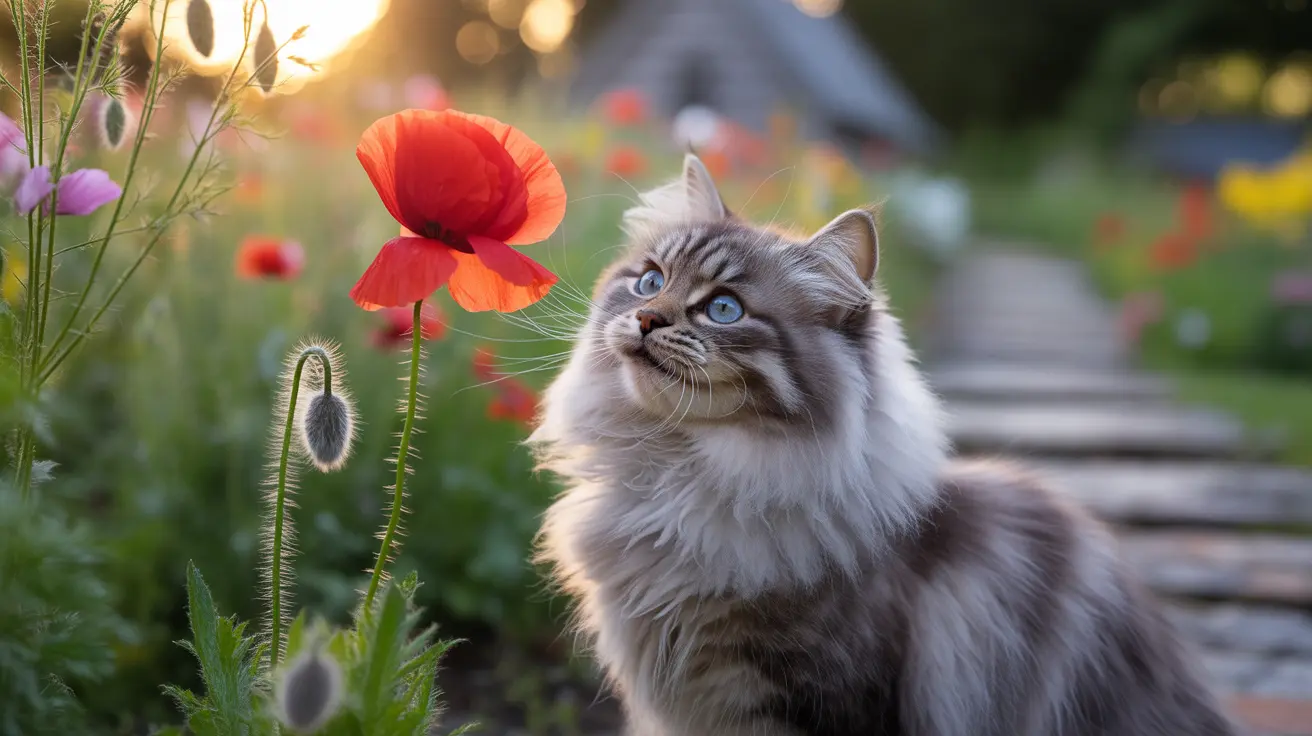While poppies are beautiful flowering plants often found in gardens and natural landscapes, they pose a significant health risk to our feline friends. All parts of the poppy plant contain toxic compounds that can cause serious health issues if ingested by cats. This comprehensive guide will help you understand the risks, recognize symptoms, and know what actions to take if your cat encounters these dangerous plants.
Whether you're a gardener, a cat owner, or both, it's crucial to understand the potential dangers that poppies present to cats. Let's explore everything you need to know about poppy toxicity in felines and how to keep your pet safe.
Understanding Poppy Toxicity in Cats
All poppy species contain toxic alkaloids, including isoquinoline and phenanthrene, as well as opioid compounds. These substances are present throughout the entire plant – from the roots to the flowers, and even in the seeds. The milky sap found in mature seed pods is particularly concentrated with these harmful compounds.
Oriental and Breadseed (Opium) poppies are notably more dangerous than annual varieties like California poppies, though all types should be considered potentially harmful to cats.
Signs and Symptoms of Poppy Poisoning
If your cat has ingested any part of a poppy plant, symptoms typically appear quickly and may include:
- Vomiting and excessive drooling
- Loss of appetite
- Dilated pupils (or sometimes pinpoint pupils)
- Unusual behavior (sedation or hyperactivity)
- Difficulty walking or poor coordination
- Disorientation or staring into space
- Lethargy
- In severe cases, coma
Emergency Response and Treatment
If you suspect your cat has eaten any part of a poppy plant, immediate action is crucial:
- Remove any remaining plant material from your cat's mouth
- Contact your veterinarian or emergency animal hospital immediately
- Do not attempt to induce vomiting without veterinary guidance
- Be prepared to describe symptoms and approximate time of ingestion
Treatment typically involves supportive care, as there is no specific antidote for poppy poisoning. Your vet may administer activated charcoal, intravenous fluids, and medications to manage symptoms.
Prevention and Safety Measures
The best way to protect your cat from poppy poisoning is through prevention:
- Remove all poppy plants from your garden if you have cats
- Choose cat-safe alternatives like catnip, mint, or cat grass
- Keep cut flowers containing poppies out of reach
- Supervise outdoor cats in areas where poppies might grow
- Educate family members about the dangers of these plants
Creating a Cat-Safe Garden
Instead of poppies, consider these pet-friendly alternatives for your garden:
- Catnip (Nepeta cataria)
- Cat grass (Dactylis glomerata)
- Mint (Mentha species)
- Lavender (Lavandula angustifolia)
- Cat thyme (Teucrium marum)
Frequently Asked Questions
Are all parts of poppy plants toxic to cats, including seeds and sap?
Yes, every part of the poppy plant is toxic to cats, including the seeds, flowers, stems, leaves, and especially the milky sap. The sap contains the highest concentration of toxic compounds.
What symptoms should I watch for if my cat ingests poppies?
Watch for vomiting, excessive drooling, dilated or pinpoint pupils, difficulty walking, behavioral changes, lethargy, and disorientation. In severe cases, cats may become comatose.
How dangerous are Oriental and Breadseed poppies compared to other varieties for cats?
Oriental and Breadseed (Opium) poppies are significantly more toxic than other varieties, such as California poppies. However, all poppy species should be considered dangerous to cats.
What immediate steps should I take if I suspect my cat has eaten a poppy plant?
Contact your veterinarian immediately, remove any remaining plant material from your cat's mouth, and observe your cat's symptoms. Don't induce vomiting unless specifically instructed by a veterinary professional.
What are some safe, cat-friendly plants I can grow instead of poppies?
Safe alternatives include catnip, cat grass, mint, lavender, and cat thyme. These plants are not only safe for cats but can also provide enrichment and enjoyment for your pet.
Remember, when it comes to your cat's safety, it's always better to err on the side of caution. If you're ever unsure about a plant's safety, consult your veterinarian or the ASPCA's toxic plant database before introducing it to your home or garden environment.






